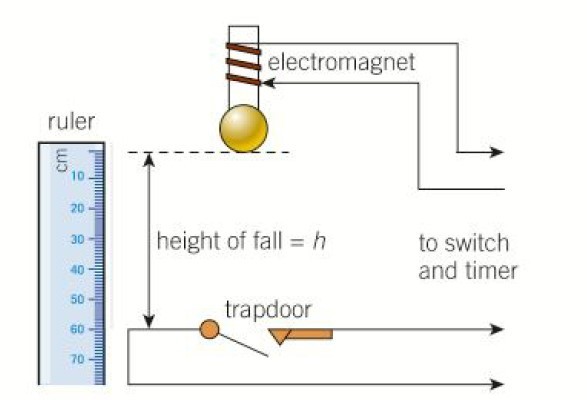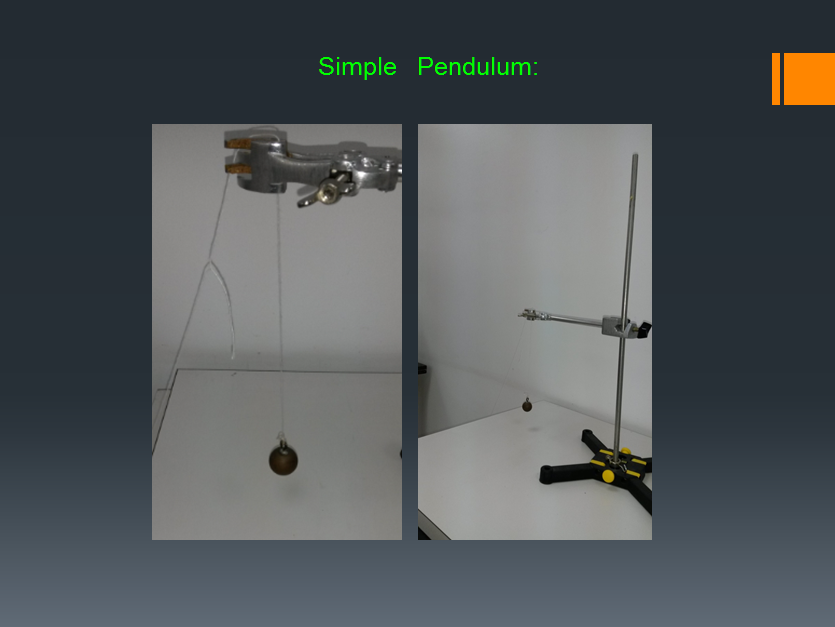

For example you could do the experiment for a range of different heights.
#Determining the acceleration due to gravity lab free#
If there is a systematic error due to the magnet you would have to find that by other means. Overall the free falling object method was a fair and simple experiment to determine the acceleration due to gravity. That's why you are being told to take the average value of the time (and the standard deviation?). So as a general rule we do the best we can i.e. 0.1 seconds to release the ball after you pressed the switch you wouldn't easily be able to spot this. Systematic errors are much harder to find because they can't (or at least can't easily) be spotted from a statistical analysis of your results. We generally assume the errors follow a normal distribution, so then we can calculate a standard deviation $\sigma$, and the final standard error from doing $N$ measurements is $\sigma/N$. That is, when you measure the same thing many times you get results that are scattered. A new absolute determination of the acceleration due to gravity at the National Physical Laboratory has been made by timing the symmetrical free motion of a. Random errors show up in your measurements because they are random.

There may or may not be a systematic error due to the fact the electromagnet does not release the ball the instant you press the switch. In this case there is a random error due to your limited ability to record the time of fall precisely. In your own experiments, you can collect data from shorter or longer distances.Generally there are two types of errors in an experiment, random errors and systematic errors. Use your own data to calculate the acceleration of the flashlight you drop. The time it takes to make that change is 0.33 sĪcceleration = (3.33 m/s – 0 m/s) / 0.33 s = 10 m/s 2 In our case, at time 0.297 to 0.33 s (time = 0.033 s), the distance traveled is from 0.4 m to 0.51 m (distance = 0.11 m). V initial is the flashlight’s velocity just before it’s dropped, or 0 m/s V final is the velocity of the light at the end of the drop. Here’s an example using our data (see the table above): If your flashlight leaves a streak of light, only record the location at the bottom of the streak (the streak is a 1/30 th of a second record of the light's fall).Ĭalculate the acceleration due to gravityĪcceleration describes how fast the rate of something changes.Īcceleration = ( V final – V initial) / the time to make this change Notice that, during the first few steps, the flashlight doesn’t fall very much. Now, step by step, record the distance in meters dropped and the corresponding time of the flashlight’s fall. The average of our acceleration calculations is -9.95. The frame you’re now at is time 0s and distance 0m.) By using the same procedure and same materials, we were able to consistently solve for acceleration. (Note that frame-by-frame players usually let you move forward or backward via arrow keys. That means each frame will add an additional 0.033 seconds.ĭistance Data: In your video player, find the frame just before your flashlight drops. Time Data: Since your camera records 30 frames a second, each frame represents only 1/30 of a second, or about 0.033 seconds. Label the columns “Time in seconds” and “Distance in meters.” (See the sample table below.) Make a table with two columns to record your data. Redo it if you didn’t get a clear view of your flashlight’s light falling straight down. Digital video is easy to erase and reshoot. Have someone else film the drop with a digital camera (in HD at standard 30 frames per second).Ĭheck your video to make sure you got the shot. If possible, use only one finger to hold the flashlight still until the time of release. Place the light as close to the 0 cm mark as possible and against the measuring tape. Make sure your flashlight is on a non-blinking setting. Turn on the flashlight and point it upwards. Have one partner stand next to the measuring tape.


 0 kommentar(er)
0 kommentar(er)
